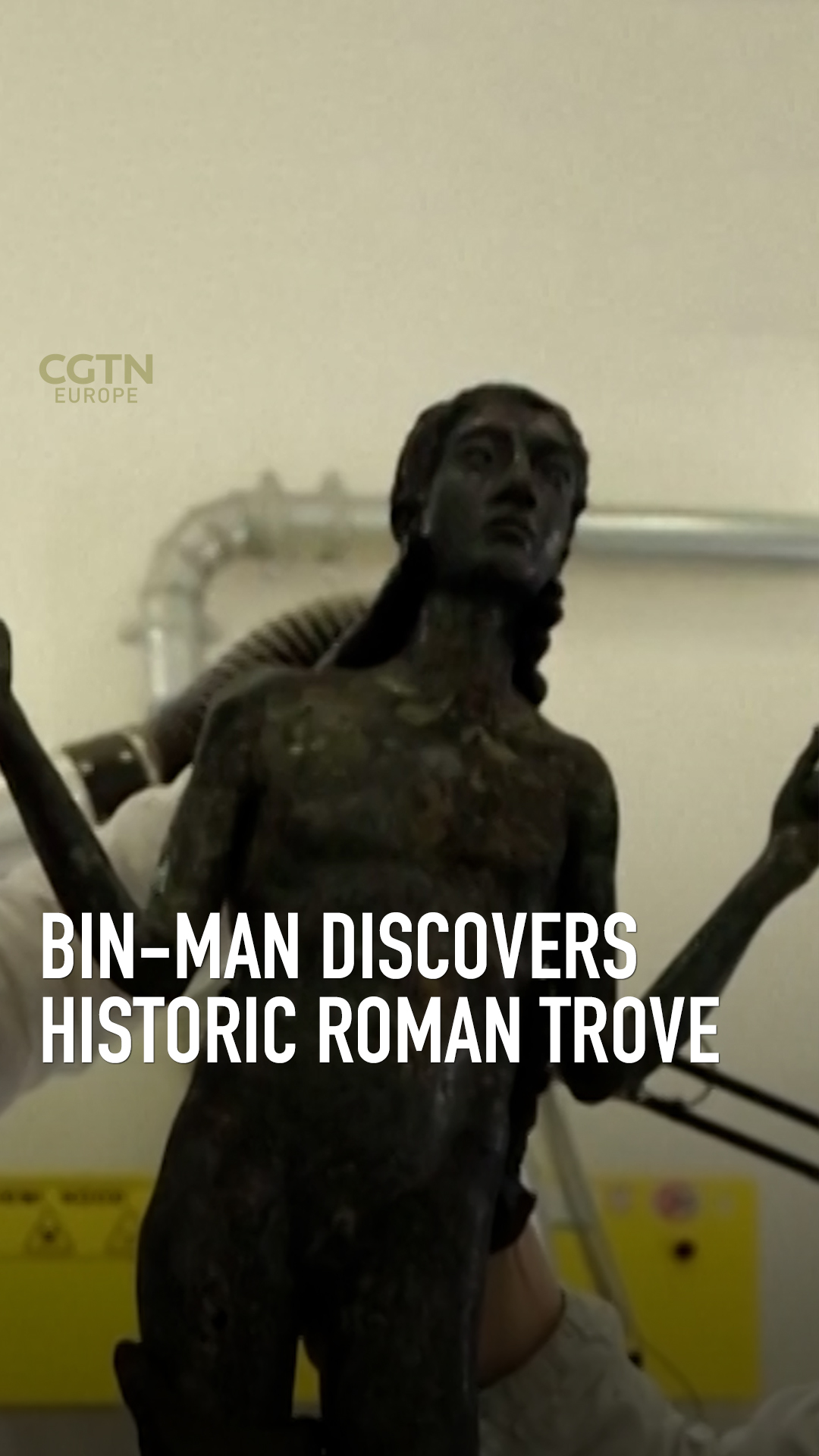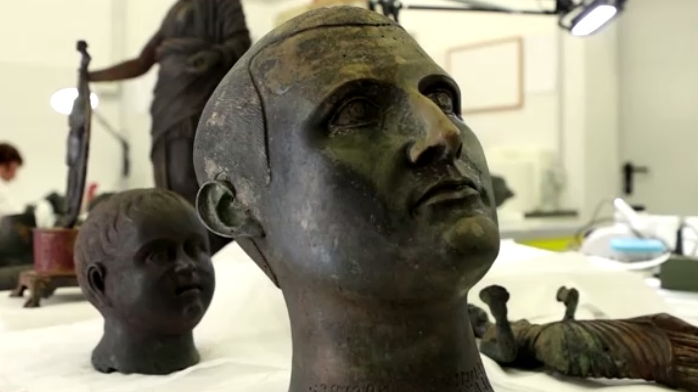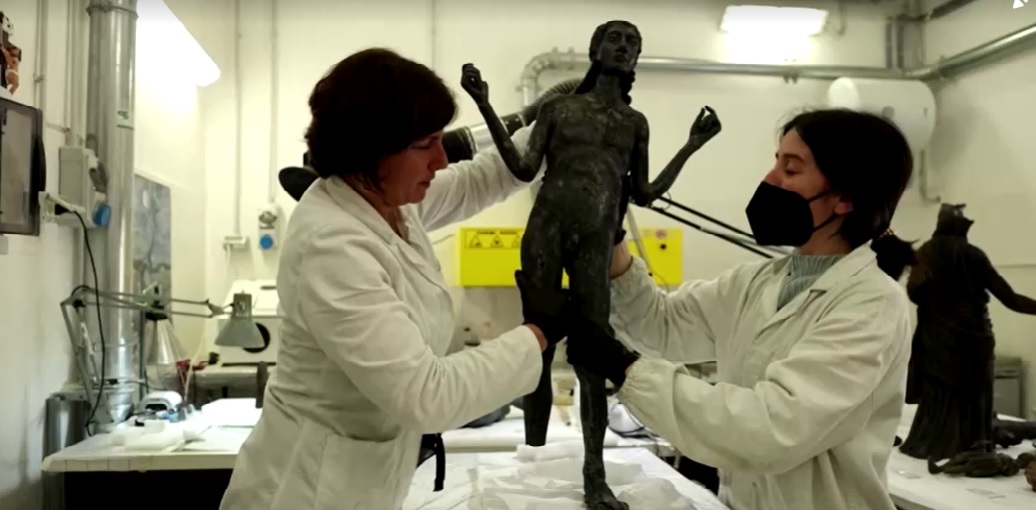00:52

One of Italy's most remarkable archeological finds in decades goes on show this month – Etruscan and Roman statues pulled from the mud in Tuscany thanks in part to the intuition of a retired garbage man.
About two dozen bronze statues were found in the ruins of an ancient spa in a hilltop village in southern Tuscany and will go on display in Rome's Quirinale Palace from June 22, after months of restoration.
When the discovery was announced in November, experts hailed it as the biggest collection of ancient bronze statues ever found in Italy, a breakthrough that would "rewrite history."

A collection of ancient bronze statues that were found in Italy by a former garbage collector will go on display this month. /Ludovico Salerno/Reuters
A collection of ancient bronze statues that were found in Italy by a former garbage collector will go on display this month. /Ludovico Salerno/Reuters
The statues were found in 2021 and 2022 in San Casciano dei Bagni, still home to popular thermal baths, where archeologists had long suspected ancient ruins could be discovered.
Digging started in 2019 on the only publicly owned plot of land near the baths, but weeks of excavations revealed only traces of some walls, according to San Casciano Mayor, Agnese Carletti.
However, a retired garbage collector and local amateur historian, Stefano Petrini, had "a flash" of intuition, remembering that years earlier he had seen bits of ancient Roman columns on a wall on the other side of the public baths.
The columns could only be seen from an abandoned garden that had once belonged to his friend, San Casciano's late greengrocer, who grew fruit and vegetables there to sell in the village shop.

The 90cm 'scrawny boy' bronze of a young Roman with an apparent bone disease is inscribed 'Marcius Grabillo.' /Ludovico Salerno/Reuters
The 90cm 'scrawny boy' bronze of a young Roman with an apparent bone disease is inscribed 'Marcius Grabillo.' /Ludovico Salerno/Reuters
Emanuele Mariotti, head of the San Casciano archaeological project, said his team was getting "quite desperate" before receiving the tip that led to the discovery of a shrine at the centre of the ancient spa complex.
The statues found there were offerings from Romans and Etruscans who looked to the gods for good health, as were the coins and sculptures of body parts like ears and feet also recovered from the site.
One of the most spectacular finds was the "scrawny boy" bronze, a statue about 90 centimeters high, of a young Roman with an apparent bone disease. An inscription has his name as Marcius Grabillo.
"When he appeared from the mud, and was therefore partially covered, it looked like the bronze of an athlete... but once cleaned up and seen properly, it was clear that it was that of a sick person," said Ada Salvi, a Culture Ministry archeologist for the Tuscan provinces of Siena, Grosseto and Arezzo.
READ MORE
Pompeii house reopens after 20 years
Rome burial site of Romulus uncovered
Unique carriage unearthed outside Pompeii
Salvi said traces of more unusual offerings were also recovered, including eggshells, pine cones, kernels from peaches and plums, surgical tools and a 2,000-year-old lock of curly hair.
The shrine was sealed at the beginning of the fifth century AD, when the ancient spa complex was abandoned, leaving its statues preserved for centuries by the warm mud of the baths.
Excavation will resume in late June, where Mariotti added that "it is a certainty" more will be found in the coming years, possibly even the other six or 12 statues that an inscription says were left behind by Marcius Grabillo.
After the Rome exhibition, the statues and other artefacts are to find a new home in a museum that authorities hope to open in San Casciano within the next couple of years.

Subscribe to Storyboard: A weekly newsletter bringing you the best of CGTN every Friday